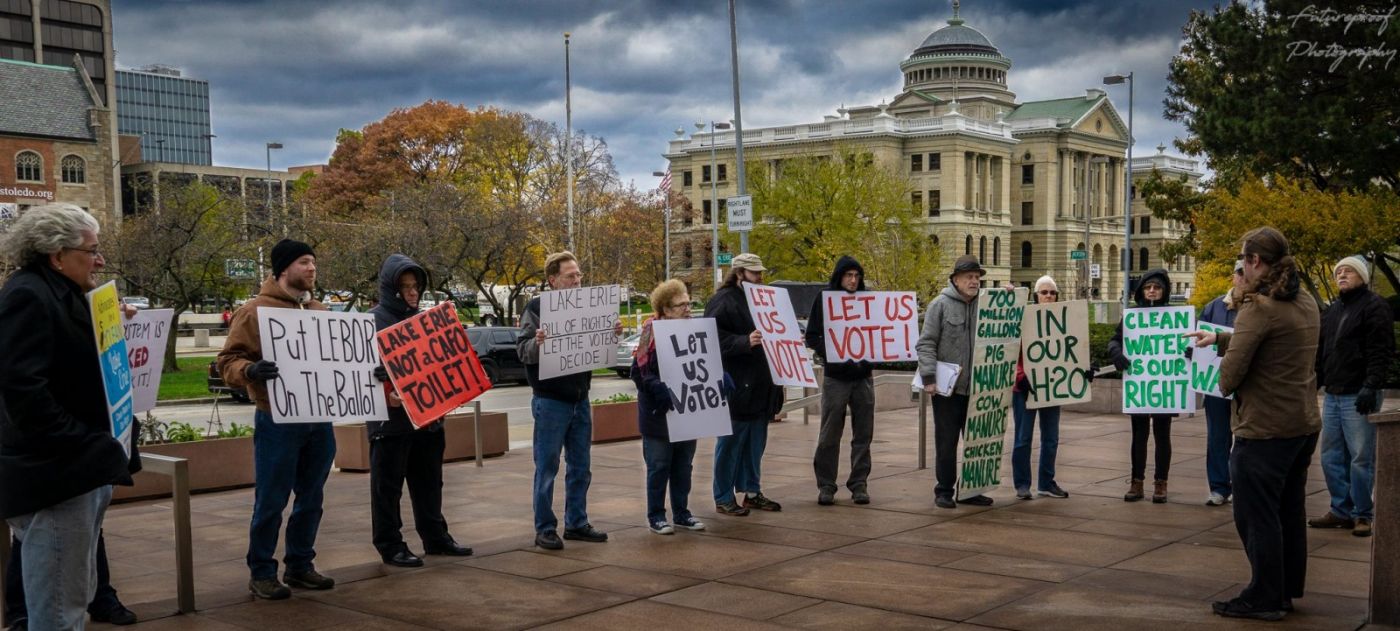From preventing toxic algae blooms to banning aerial pesticide spraying, the fight for local control over environmental decisions elevates the rights of nature as a key step in the larger community rights movement.
This article by Valerie Vande Panne appeared in Next City on August 12, 2019.
I’ve been following articles and news updates on the Community Rights movement for well over 5 years now. This article by Valerie Vande Panne is one of the more expansive in content and research that I have come across. — Curt Hubatch, Community Rights US Media Team Member
The five Great Lakes and their watershed make up the largest source of surface fresh water on Earth. Tens of millions of people rely on them as a source for drinking water — a natural resource living beings can’t survive without.
And yet, in the wake of devastating toxic algae blooms (among other crises), the risk is growing that the Great Lakes will become so polluted, so toxic, that plant, animal, and marine life might no longer be able to rely on the lakes as a freshwater source. Algae blooms, attributed to nutrient runoff in agriculture, already affect half a million people in the greater Toledo area, who, in 2014, spent days without fresh water to cook, drink or wash clothes.
In 2019, the algae bloomed early, is growing rapidly and includes an area potentially affecting 11 million people. And as toxic algae blooms are fueled by the warming temperatures of climate change, this crisis has residents worrying they will be without clean water more frequently and for longer periods of time.
Imagine, then, granting the Great Lakes the right to exist free from pollutants that could contaminate and harm the lives that rely upon them. Now imagine that we, as humans and as Americans, have the right to lawfully stop anything that violated the rights of the Great Lakes to exist and evolve naturally, toxic-waste free — environmental permissions be damned.
(Read the rest of this article by Valerie Vande Panne at its original source HERE.)

